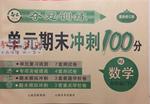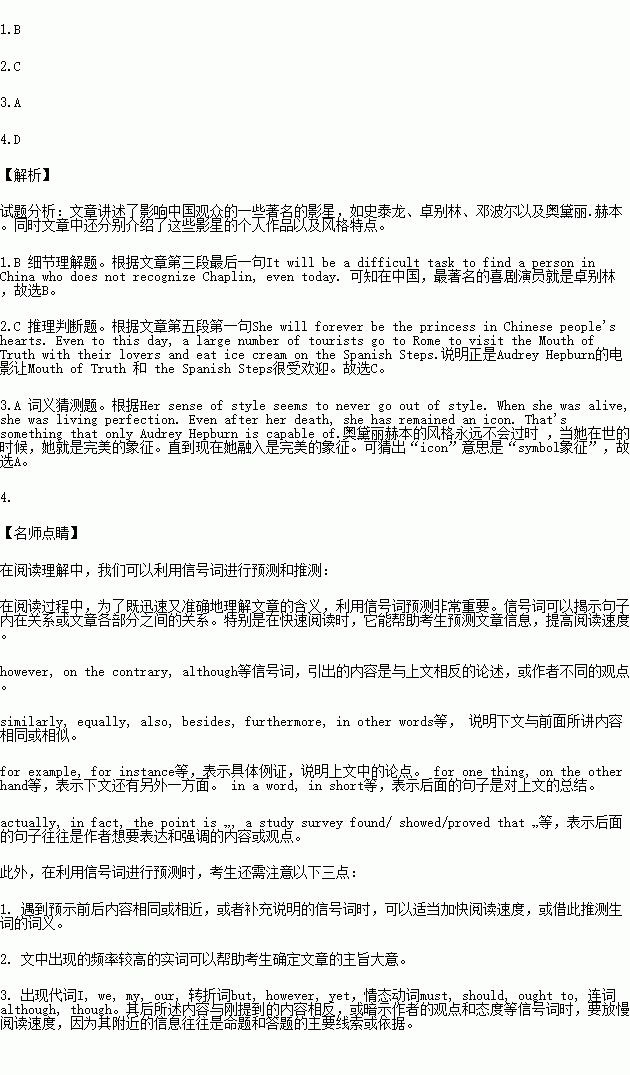题目内容
America's child movie star Shirley Temple Black died late Monday evening at the age of 85. Her fans in China are also deeply saddened. Temple is just one example of movie stars that China adored, and still adores. Here's our editor's pick of the top movie stars who have influenced China.
1. Sylvester Stallone
Oh, Rambo! The first strong American man that China knew. His accented English, easily recognizable even for someone who doesn't speak English, and his eyes that never seemed to smile, makes him someone whom cannot be forgotten. He represented the strong American image, and even stirred a boxing and bodybuilding fever in China.
2.Charlie Chaplin (April 16, 1889 – December 25, 1977)
In the 20th century, it is not too much to say that Einstein made the greatest contributions to science, and not many would disagree that Chaplin did the same for film. He was the first actor that introduced comedy to most Chinese viewers, and politically, he was also a close friend of China’s. His silent films broke the barrier of language and his form of art was recognized by all. It will be a difficult task to find a person in China who does not recognize Chaplin, even today.
3. Shirley Temple ( April 23, 1928 – February 10, 2014)
When Chinese audiences saw this adorable child star for the first time on screen, Shirley Temple had already lived for more than half a century. In her movies, she was always alone or in trouble, but this adorable little blonde(金发女郎) could always resolve anything with her kindness, push away the fogginess and bring about light. The brand "Shirley Temple" was a product of the Great Depression. People watched her act to forget their hardships as Temple entertained the poor, the rich, adults and children alike. Several decades later, when her films were screened in China, the effects were the same.
4. Audrey Hepburn( May 4, 1929 – January 20, 1993)
She will forever be the princess in Chinese people's hearts. Even to this day, a large number of tourists go to Rome to visit the Mouth of Truth with their lovers and eat ice cream on the Spanish Steps. Her sense of style seems to never go out of style. When she was alive, she was living perfection. Even after her death, she has remained an icon. That's something that only Audrey Hepburn is capable of.
1.According to the passage, who was most known for comedy in China?
A. Sylvester Stallone B. Charlie Chaplin
C. Shirley Temple D. Audrey Hepburn
2. What can we learn from the passage?
A. Sylvester Stallone taught boxing and bodybuilding and caused a fever in China.
B. Charlie Chaplin was China’s close friend because he introduced comedy to China.
C. Audrey Hepburn’s movie made the Mouth of Truth and the Spanish Steps popular.
D. Shirley Temple’s works can only help Americans forget hardships and enjoy life better.
3. What does the underlined word “icon” mean in the passage?
A. symbol B. sign C. mystery D. heroine
4. In which part can we most probably read this passage?
A. Art B. Columns
C. Music & Theater D. Film &TV
 夺冠训练单元期末冲刺100分系列答案
夺冠训练单元期末冲刺100分系列答案 新思维小冠军100分作业本系列答案
新思维小冠军100分作业本系列答案
